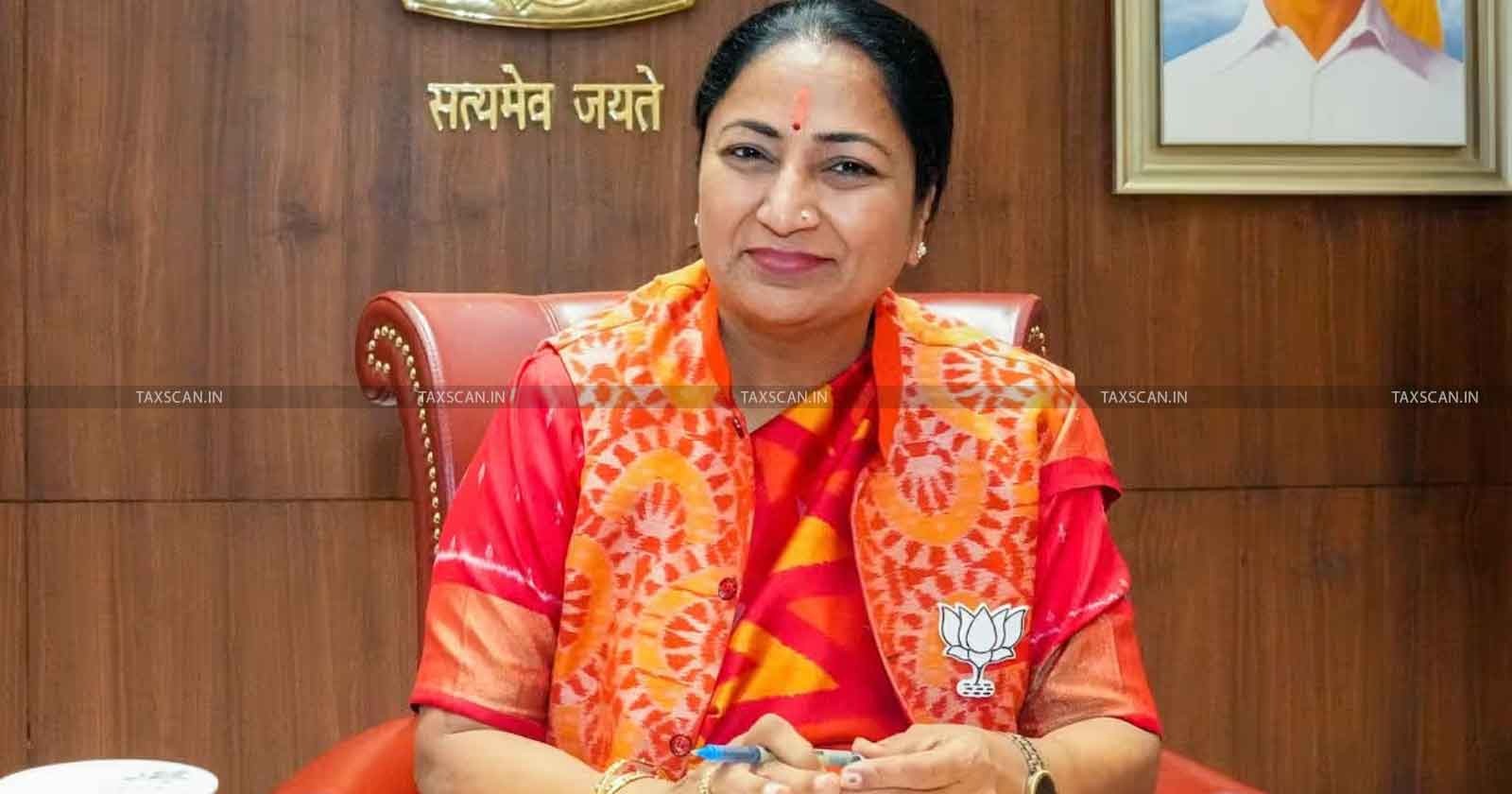Delhi Budget 2025: The Major Takeaways from Rekha Gupta’s ₹1 Lakh Crore Plan for FY26 in the BJP Era
The implementation of the various schemes discussed in the budget will be a key determinant in deciding the fate of the BJP governance in Delhi after the long-reign of the AAP

Delhi Chief Minister Rekha Gupta today presented the ₹1 lakh crore Budget for 2025-26, marking the first budget of a BJP-led Delhi government in 26 years. The last time a BJP-majority government presented a budget in Delhi was in 1998, when then-Chief Minister Sushma Swaraj introduced the state’s financial roadmap.
The current budget, which represents a 31.56% increase from last year’s ₹76,000 crore allocation, aims to redefine governance by prioritizing infrastructure, education, public transport, healthcare, and women’s empowerment.
Gupta, who also holds the finance portfolio, called this “a historic roadmap for a self-reliant Delhi” while taking sharp jabs at the previous AAP government, accusing them of political mismanagement and lack of development. The Budget hints at deeper scrutiny into the past administration’s financial decisions, including budget allocations, spending efficiency, and revenue generation.
Worried About SME IPO Pitfalls? Gain Clarity with This Advanced Course! Register Now
Key Highlights of the Delhi Budget 2025-26:
Infrastructure and Civic Development
A significant portion of the budget has been allocated to improving Delhi’s infrastructure. The Municipal Corporation of Delhi (MCD) has been granted ₹6,897 crore to enhance sanitation, waste management, and urban infrastructure. In an effort to strengthen connectivity between Delhi and the NCR region, ₹1,000 crore has been set aside for road and transport upgrades.
Further, a pilot project worth ₹100 crore has been introduced to replace overhead electrical lines with underground cabling, a move aimed at improving safety and aesthetics. Additionally, ₹696 crore has been earmarked for slum redevelopment projects, which will focus on improving housing and living conditions for marginalized communities.
Women’s Empowerment and Safety
Women’s welfare has been given substantial attention in this budget, with ₹5,100 crore allocated to the Mahila Samriddhi Scheme, which will provide a ₹2,500 monthly allowance to eligible women. In a bid to enhance women’s safety across the capital, the government has announced plans to install 50,000 CCTV cameras in key locations. Furthermore, ₹210 crore has been set aside for pregnant women’s welfare, which includes nutrient kits and a one-time allowance of ₹21,000 per beneficiary to support maternal health and childcare.
Healthcare and Sanitation
The healthcare sector has received ₹6,874 crore, which will go towards expanding Ayushman Arogya Mandir and setting up new health and wellness centers. The government has also increased healthcare coverage under Ayushman Bharat to ₹10 lakh per individual, with ₹2,144 crore allocated for this expansion. Clean drinking water and sanitation remain a priority, with ₹9,000 crore set aside to ensure improved access to safe water.
Efforts to clean the Yamuna River have been reinforced with a ₹500 crore allocation, ensuring that only treated water is discharged through 40 decentralized sewage treatment plants. Additionally, ₹500 crore has been dedicated to sewage treatment plant upgrades, while ₹250 crore will be used to replace outdated sewer lines across the city.
Worried About SME IPO Pitfalls? Gain Clarity with This Advanced Course! Register Now
Read More: Kerala State Budget 2025: Key Highlights
Education and Digital Learning
The education sector has been granted ₹1,700 crore, with a particular focus on modern learning initiatives. The government has proposed setting up CM Shri Schools, modeled after the New Education Policy (NEP), with a ₹100 crore allocation. To promote digital literacy, ₹750 crore has been set aside to provide free laptops to 1,200 Class X students.
An additional ₹50 crore has been reserved for 175 new computer labs and smart classrooms. In an effort to position Narela as an education hub, the government has allocated ₹500 crore to develop state-of-the-art academic institutions in the area.
Furthermore, ₹21 crore has been earmarked for 100 new language labs, named after Dr. A.P.J. Abdul Kalam, offering courses in French, German, Spanish, and English. A talent hunt scheme, backed by ₹5 crore, has also been introduced to identify and support promising students.
Public Transport and Connectivity
Delhi’s public transport sector has received the largest allocation in the budget—₹12,952 crore. A major change has been announced regarding the free bus rides for women, as the existing pink ticket system will be replaced with a new digital card system to improve transparency and prevent misuse.
Pollution Control and Environmental Sustainability
To tackle Delhi’s persistent air pollution crisis, the government has allocated ₹300 crore for pollution control measures. Additionally, ₹506 crore has been earmarked for environmental conservation and afforestation programs under the environment and forest department.
Worried About SME IPO Pitfalls? Gain Clarity with This Advanced Course! Register Now
Welfare and Cultural Promotion
A ₹100 crore allocation has been made for 100 Atal Canteens, which will provide nutritious meals at just ₹5 for economically weaker sections. The budget also includes ₹30 crore for an International Film Festival, aimed at boosting tourism and cultural prominence. In a move to modernize animal welfare facilities, ₹40 crore has been allocated for cow shelters (gaushalas) in Ghummanhera.
Security and Urban Planning
The government has announced a ₹10 crore allocation for a feasibility study on relocating Tihar Jail to the outskirts of Delhi, aiming to improve security and prison management. Meanwhile, ₹125 crore has been earmarked for the upgradation of Delhi Fire Services (DFS), which includes AI-based dispatch solutions and real-time fire monitoring systems.
Read More: Finance Bill 2025 Passed in Lok Sabha with 35 Amendments
Criticism and Reactions from the Opposition
The budget has been met with strong criticism from former Chief Minister and Leader of Opposition Atishi Marlena, who described it as a “hawa hawai” (unrealistic and baseless) Budget. She questioned why the BJP government did not present an Economic Survey, arguing that if the administration truly had ₹1 lakh crore in revenue, they would have had no reason to withhold financial details. Atishi also accused the BJP-led Delhi government of diverting funds away from essential sectors such as education and healthcare, calling the budget “an eyewash” that weakens public services. Additionally, she claimed that funds had been slashed for municipal services, affecting Delhi’s overall governance.
What Lies Ahead for the National Capital?
While the ₹1 lakh crore budget presents a bold vision for Delhi’s future, its execution and effectiveness remain uncertain. Will this massive allocation of funds translate into tangible improvements in infrastructure, education, and welfare, or will it remain a political statement? With opposition parties preparing for a heated contest over governance strategies, the financial roadmap for Delhi’s FY26 is expected to be a subject of intense debate in the months ahead.
Click the Blue Button Below to access the complete draft of the Delhi Budget Speech 2025-26.
To Read the full text of the Order CLICK HERE
Support our journalism by subscribing to Taxscan premium. Follow us on Telegram for quick updates


